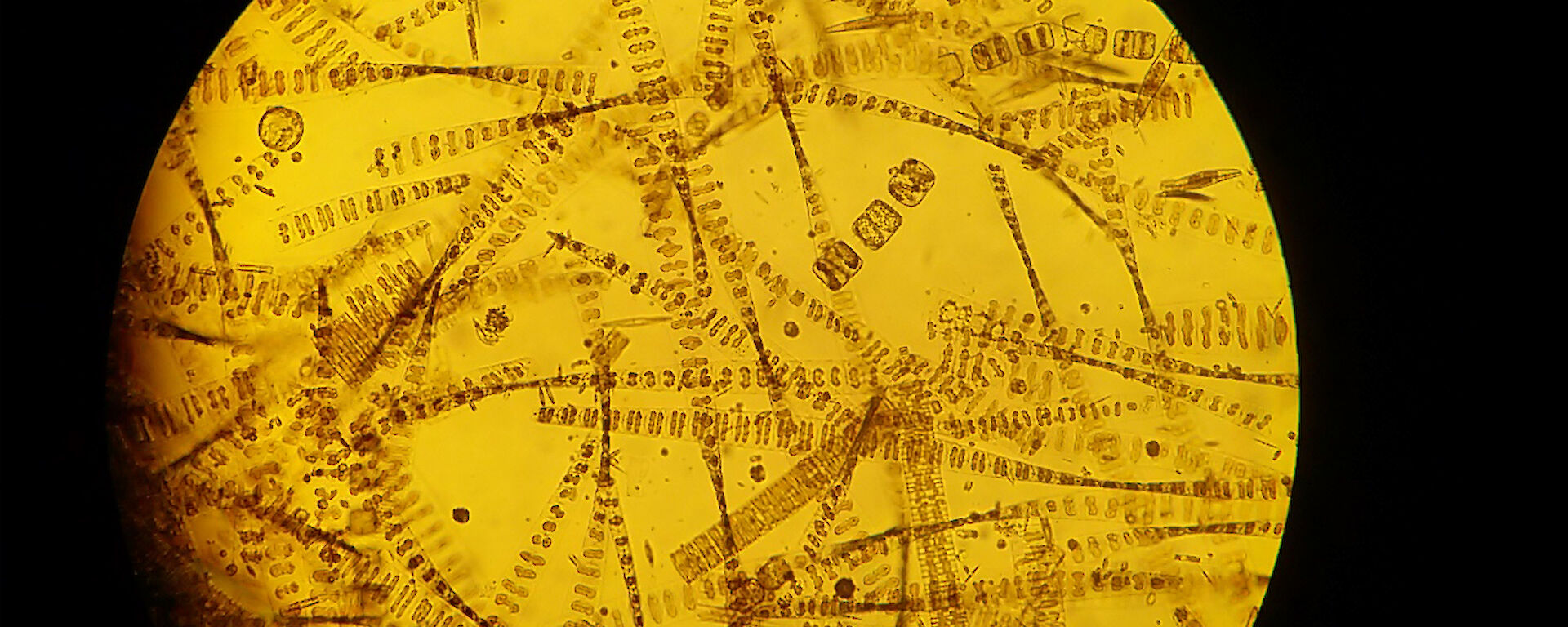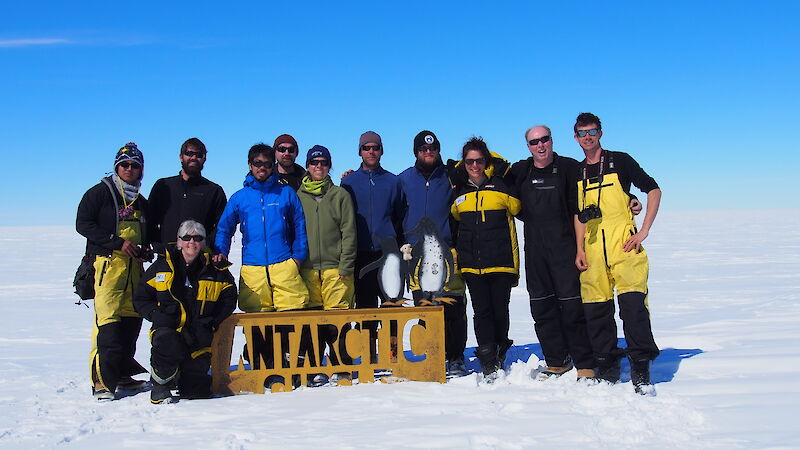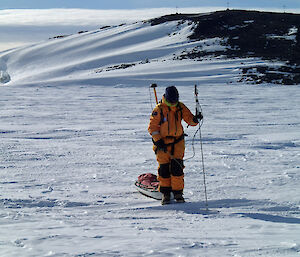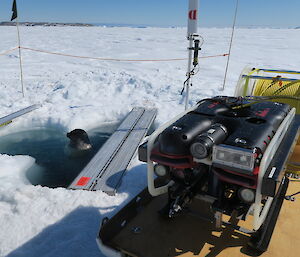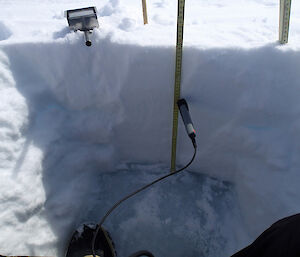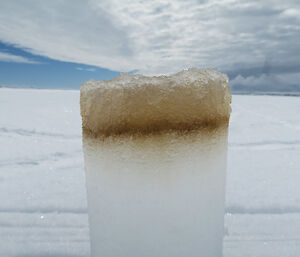Early this season Davis station saw an influx of 12 sea-ice researchers studying various aspects of the near-shore fast ice, through four complementary science projects. Two of the project leaders, Drs Klaus Meiners (fast-ice algae) and Petra Heil (fast-ice physics), review some of the work.
Land-fast sea ice (‘fast ice’) is the dominant cryospheric feature of the near-shore zone. It is a sensitive indicator and modulator of Antarctic climate processes, and a structuring component of Antarctic marine ecosystems. Our projects focussed on characterising the fast ice and overlying snow within the atmosphere-ocean system before, during and after the spring transition, and linking these to changes in the fast-ice associated algal biomass.
After a delayed arrival our team was quickly deployed, thanks to excellent station support, including speedy access to our science cargo and early field training. Over three weeks the fast-ice physics and ecosystems team worked along four detailed transects. At each of these a remotely operated vehicle or ‘ROV’ was deployed under the sea ice to measure the physical and biological properties of the fast-ice sub-surface (Australian Antarctic Magazine 29: 12–13, 2015). The ROV was equipped with a radiometer (light sensor), cameras, and an upward-looking sonar to detect ice draft (ice extent below the surface) as it ‘flew’ under the ice along its 128m transects.
During these dives the ROV-mounted radiometer collected more than 2940 light spectra. An ‘L-arm’ radiometer was also deployed through holes in the fast ice at 48 locations across the transects, to collect simultaneous data of ice-algae biomass and under-ice light spectra. Together, these radiometer data will be used to estimate the amount of algae, and to understand its spatial and temporal distribution in the Davis fast ice and the physical drivers of ice-algal growth in coastal Antarctic environments.
To investigate the physical environment, coincident snow-thickness and ice-surface temperature measurements were taken along the ROV transects. At least two snow pits were dug along each transect to examine snow cover, which affects light penetration and algae growth. These snow pits provided information on the vertical distribution of snow temperature, salinity, density, grain size and other parameters. Ice cores were retrieved to derive vertical profiles of ice temperatures, salinity, density, structure and oxygen and deuterium isotope composition.
Complementing the survey were intensive snow-thickness measurements over the wider area, which were referenced to the ice surface using GPS. The teams also retrieved more than 130 sea-ice cores across the broader study area, to measure the size and form of ice crystals and to determine ice algal biomass using classical techniques.
As part of an over-winter project a pair of sea-ice mass-balance stations (measuring gain and loss of ice) have been recording vertical profiles of ice and snow temperatures (at 2cm intervals) as well as the temperature of the near-surface ocean and atmosphere. To merge these observations with seasonal changes in the deeper oceanic layers, vertical profiles of the ocean properties were collected at the transect sites as well as next to the over-winter ice mass-balance site.
We had a fantastic time at Davis. Despite some delays we completed our sampling program successfully, thanks to the excellent support by the entire Davis station personnel who provided field training, maintained vehicles and repaired broken scientific gear, amongst other things, throughout our stay.
We will undertake specialised technical analysis of our samples once they are returned from the field. However, based on early data exploration there is a strong indication that the blizzard we experienced during the middle of our sampling delayed the spring melt of the sea ice and thus extended the algal season in the Davis fast ice. We speculate that potential future changes, such as in Antarctic snowfall during spring, may have flow-on effects on ice-covered marine ecosystems. The collected data will help to test this hypothesis.
Petra Heil and Klaus Meiners
Australian Antarctic Division

